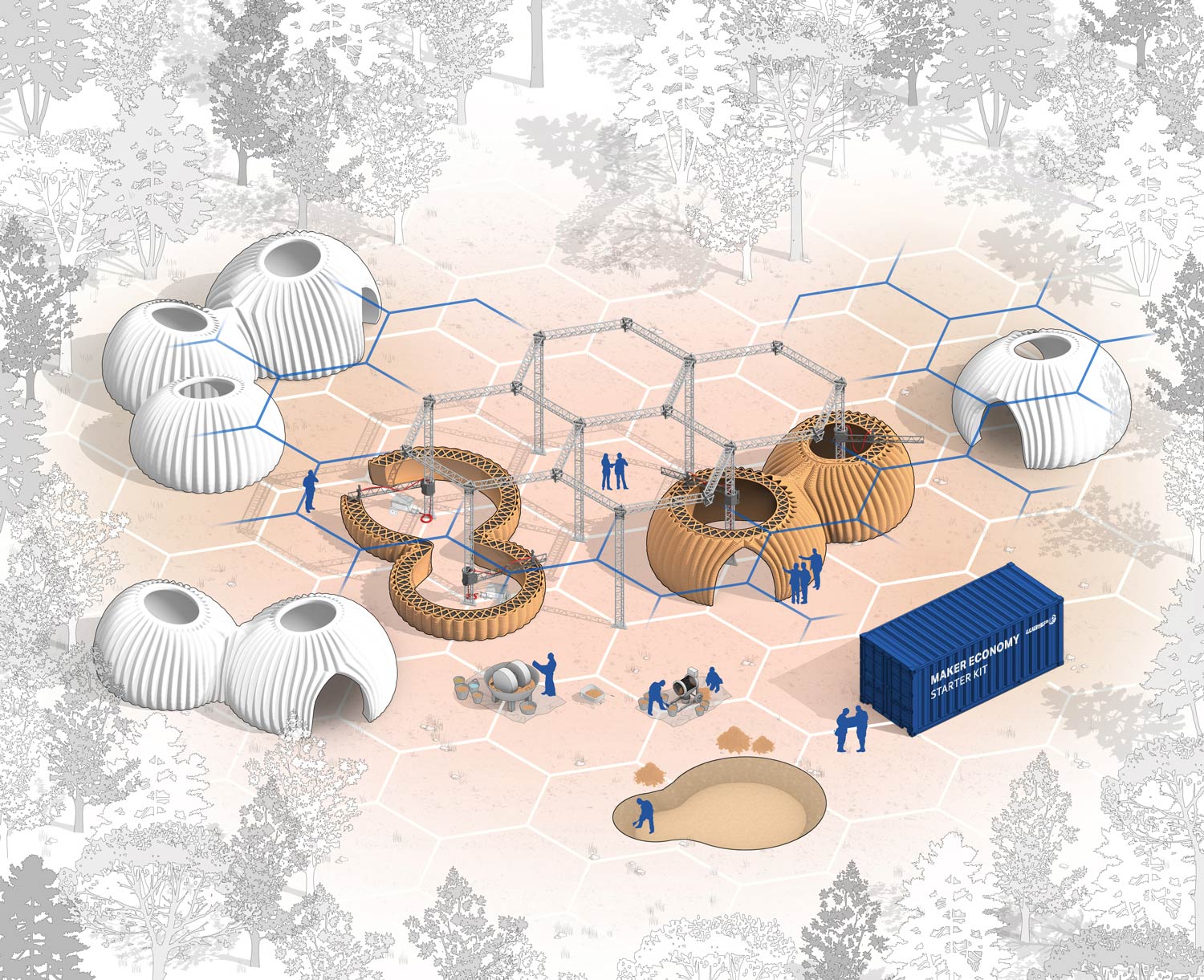Italy (Massa Lombarda)
A new circular model of housing entirely created with reusable and recyclable materials has taken form in Italy thanks to collaborative 3D printers. Welcome to the future.
In Massa Lombarda, a commune east of Bologna and Ravenna in Italy, carbon-neutral buildings are being created from clay sourced from local soil – and they’re adaptable to any climate and context. The ‘TECLA’ takes its name from ‘technology’ and ‘clay’ and is the world’s first fully 3D printed construction made from natural materials.
“From the shapeless earth to the earth as house shaped. Today we have the knowledge to build with no impact in a simple click.” – Massimo Moretti, WASP Founder
Designed by Mario Cucinella Architects and made with multiple 3D printers operating at the same time, TECLA is constructed by WASP, Italy’s 3D printing pioneers. It represents a real challenge for 3D printing, maximising the performance of the oldest of materials for the future of the green economy: the raw earth.

Made in Massa Lombarda with Crane WASP’s brand new 3D printer, TECLA is an unprecedented achievement bringing printing geometry to its physical limit, where the value of local raw materials is amplified by digital design.

TECLA is the first eco-habitat built using multiple Crane WASP collaborative printers. For the first time in the world, two printing arms have been synchronised as part of a construction, thanks to software capable of optimising movements, avoiding collisions and ensuring simultaneous operation.

This shows that 3D technology is able to create buildings by optimising the construction process and minimising the use of human and energy resources.
The construction process can be replicated too thanks to the WASP Maker Economy Starter Kit, which consists of multiple 3D printers and a complex system of picking, mixing and pumping materials. Thanks to years of research, TECLA can be synthesised in 200 hours of printing and an amazing 7,000 machine codes.
WASP stands for ‘World’s Advanced Saving Project’ and was inspired by the potter wasp, which builds its own nest with material recovered from the surrounding environment. The Italian company has been developing viable construction processes based on the principles of the circular economy and digital fabrication since 2012.

On the market since 2021, WASP’s 3D-printed houses can be fabricated in the shortest possible time and in the most sustainable way with the first multi-printer Crane WASP system. Each printer unit has a printing area of 50 square meters and therefore makes it possible to build independent living modules, of any shape, in a few days. The presentation of TECLA is scheduled for spring 2021.

“The completion of the structure is an important milestone and shows that, thanks to the design and technologies used, TECLA is no longer just a theoretical idea but can be a real and achievable response to the needs of living today and the future”, underlines Mario Cucinella, the founder of Mario Cucinella Architects and SOS – School of Sustainability.
Watch the printing phase of the TECLA supporting structure in action:
AtlasAction: Keep up to date by following WASP on Twitter or Facebook.
Project leader
Massimo Moretti, WASP Founder, & Mario Cucinella, architect
Support the Atlas
We want the Atlas of the Future media platform and our event to be available to everybody, everywhere for free – always. Fancy helping us spread stories of hope and optimism to create a better tomorrow? For those able, we'd be grateful for any donation.
- Please support the Atlas here
- Thank you!

Massimo Moretti and Mario Cucinella


